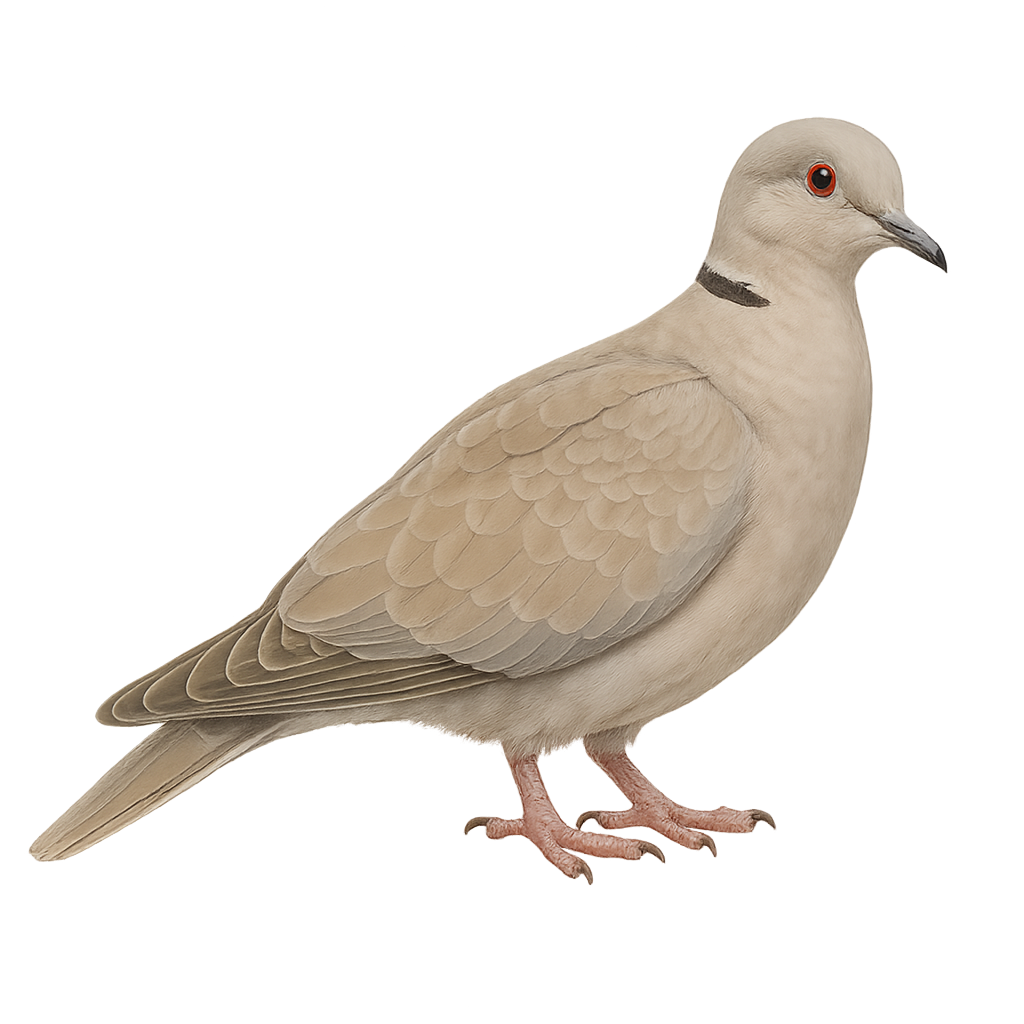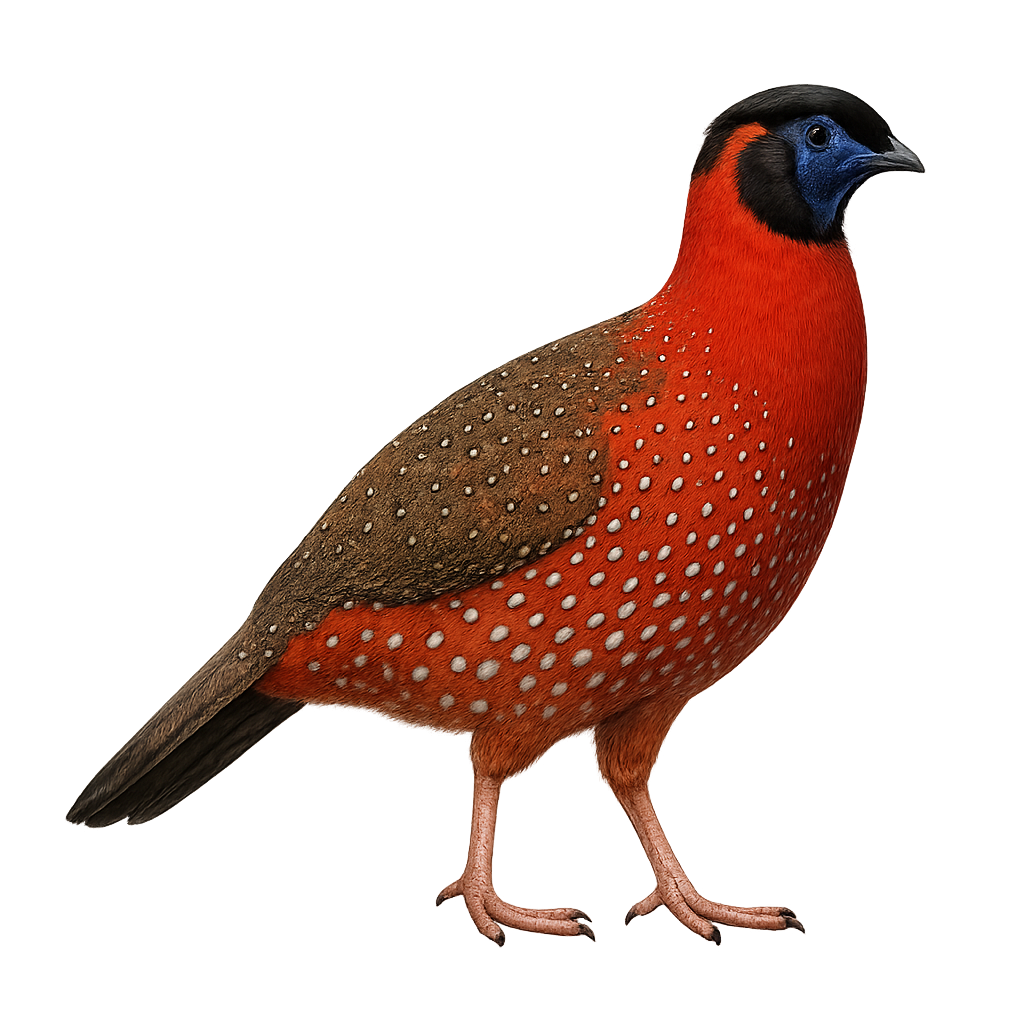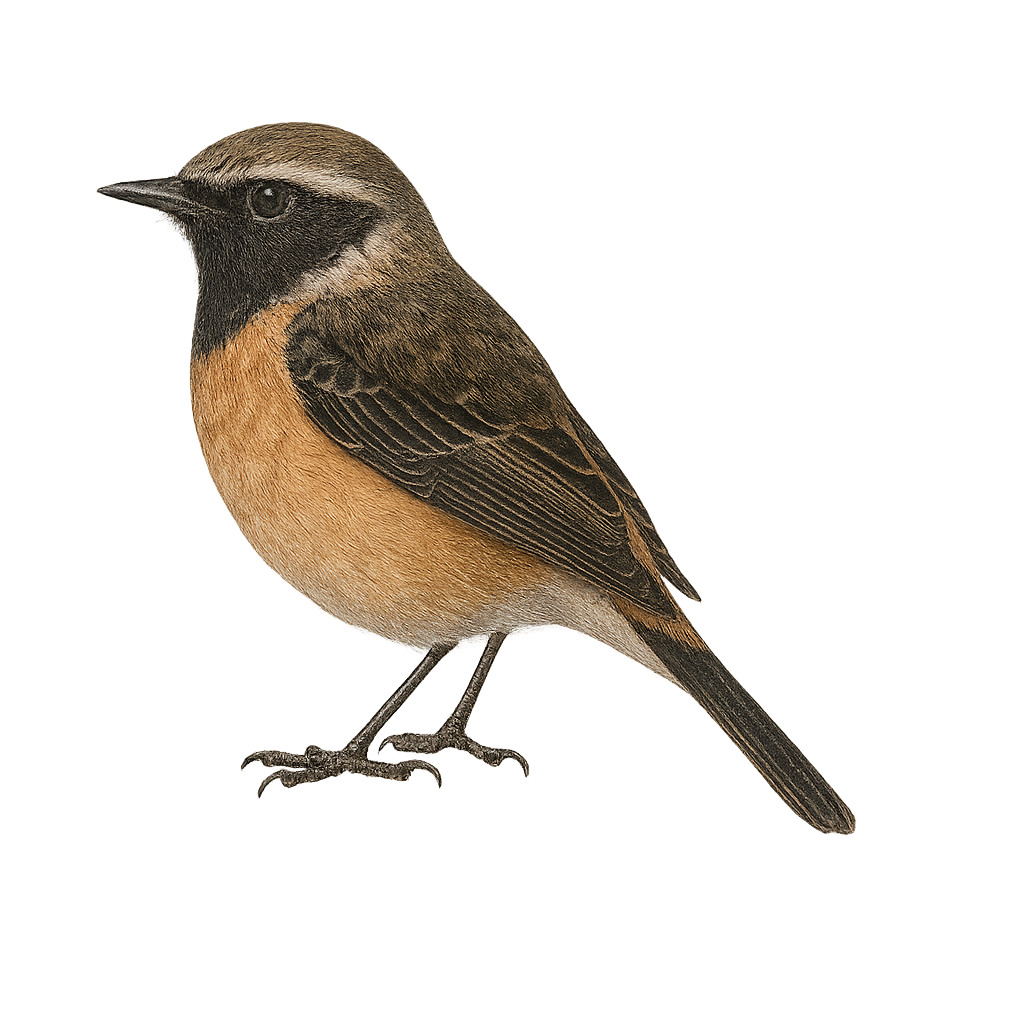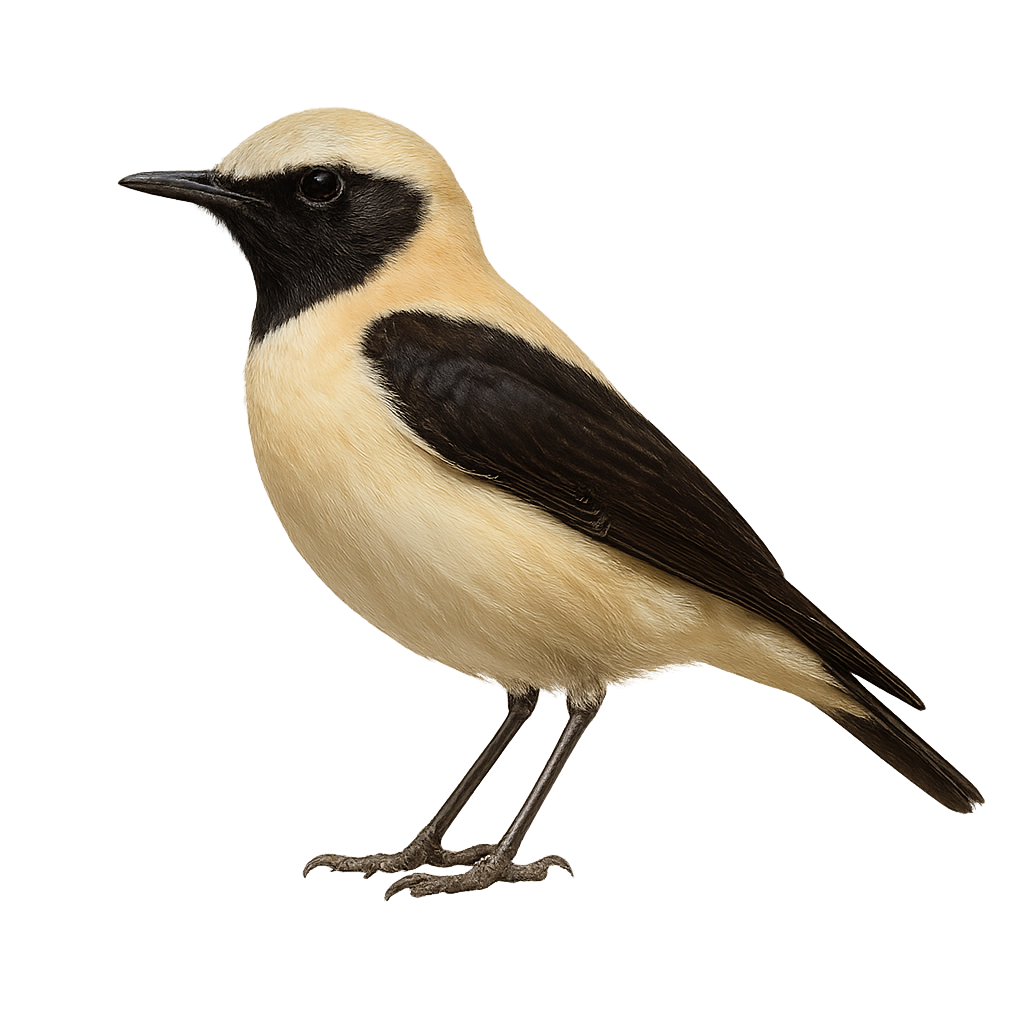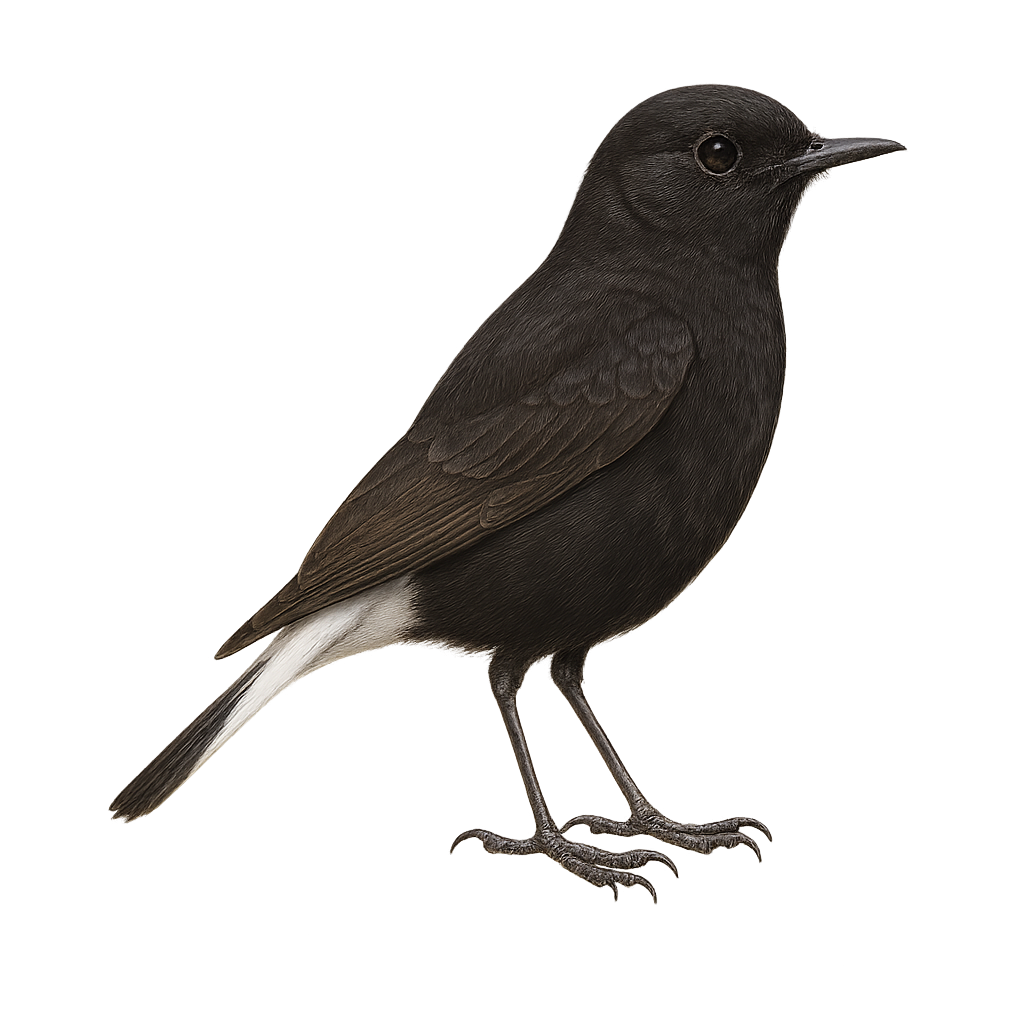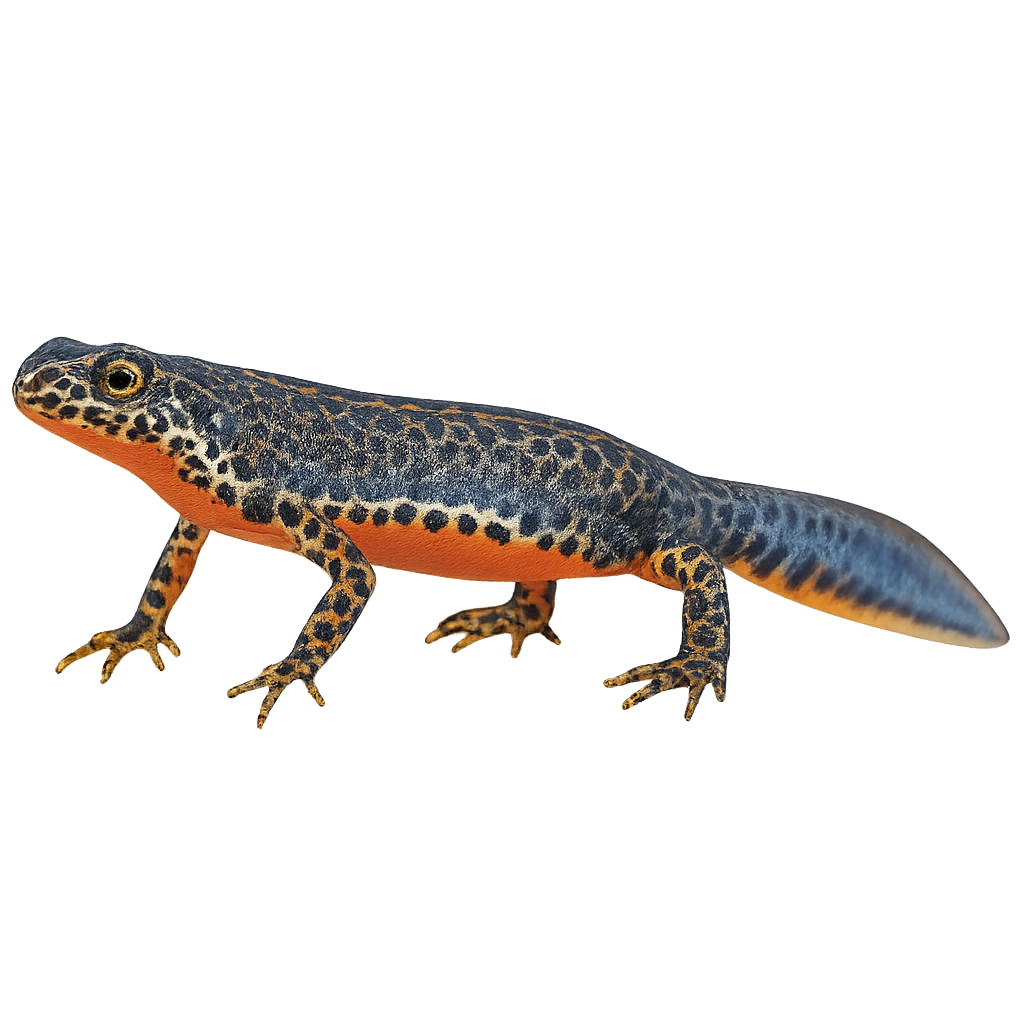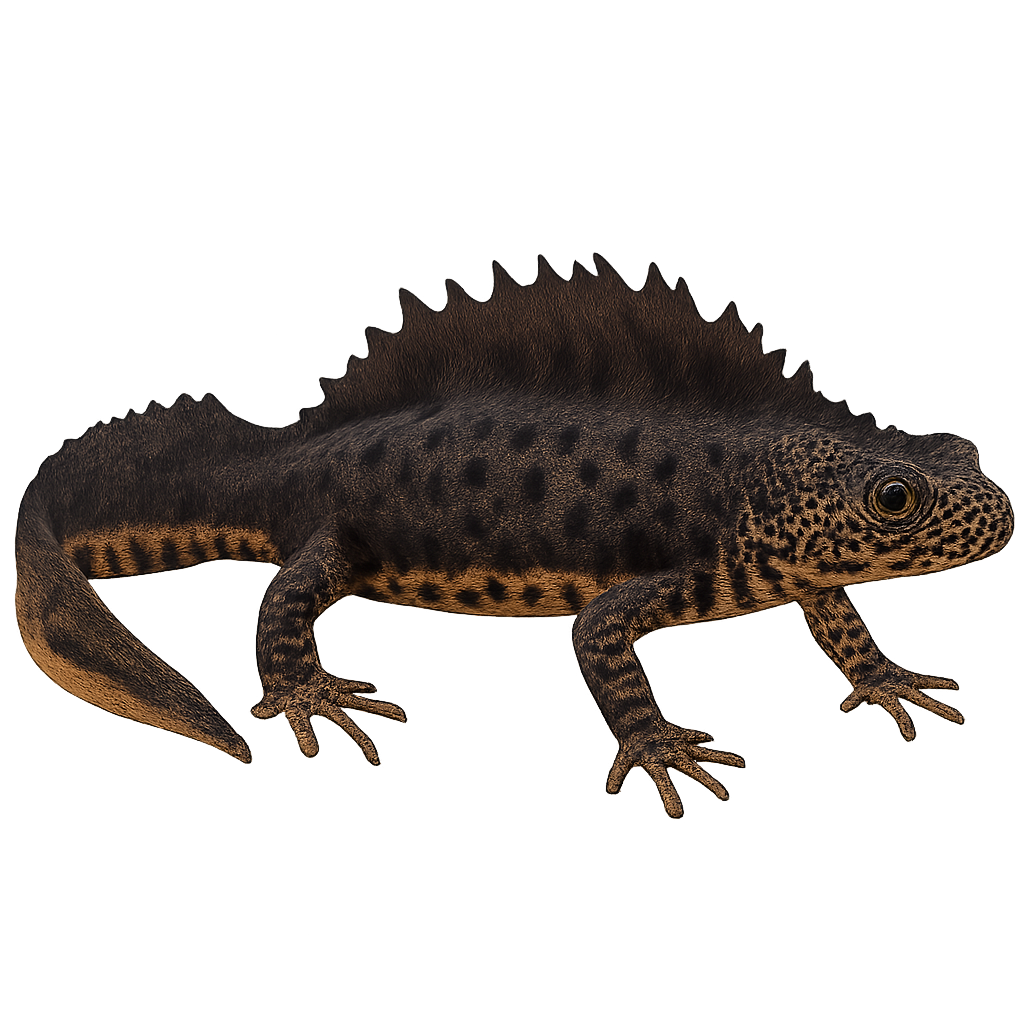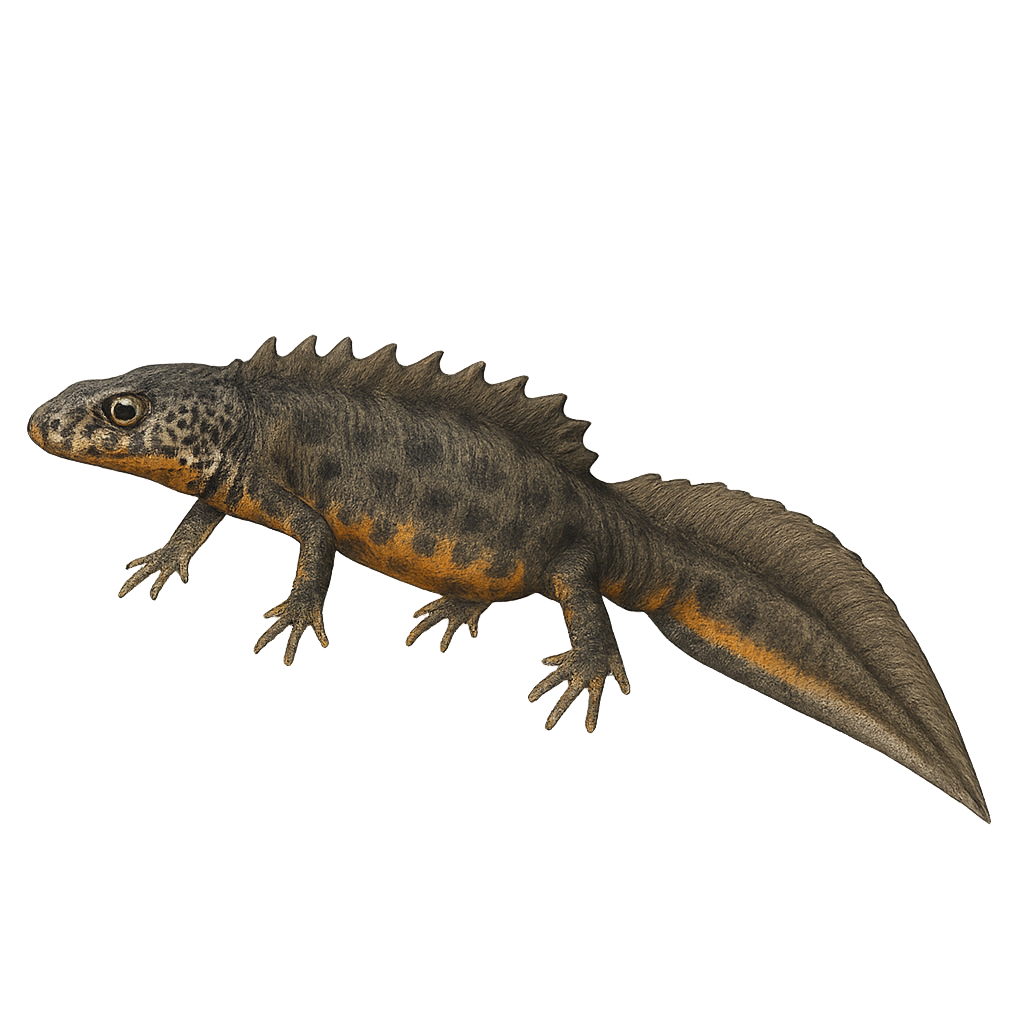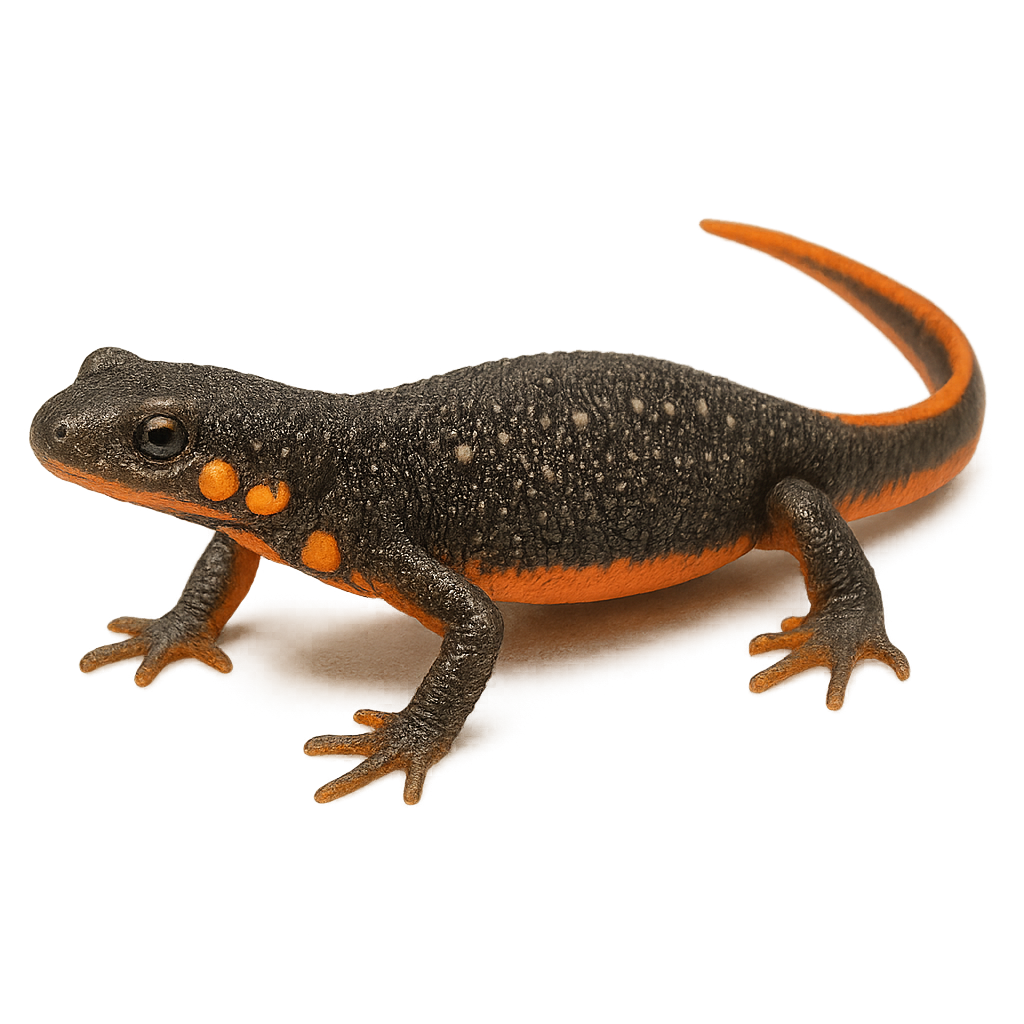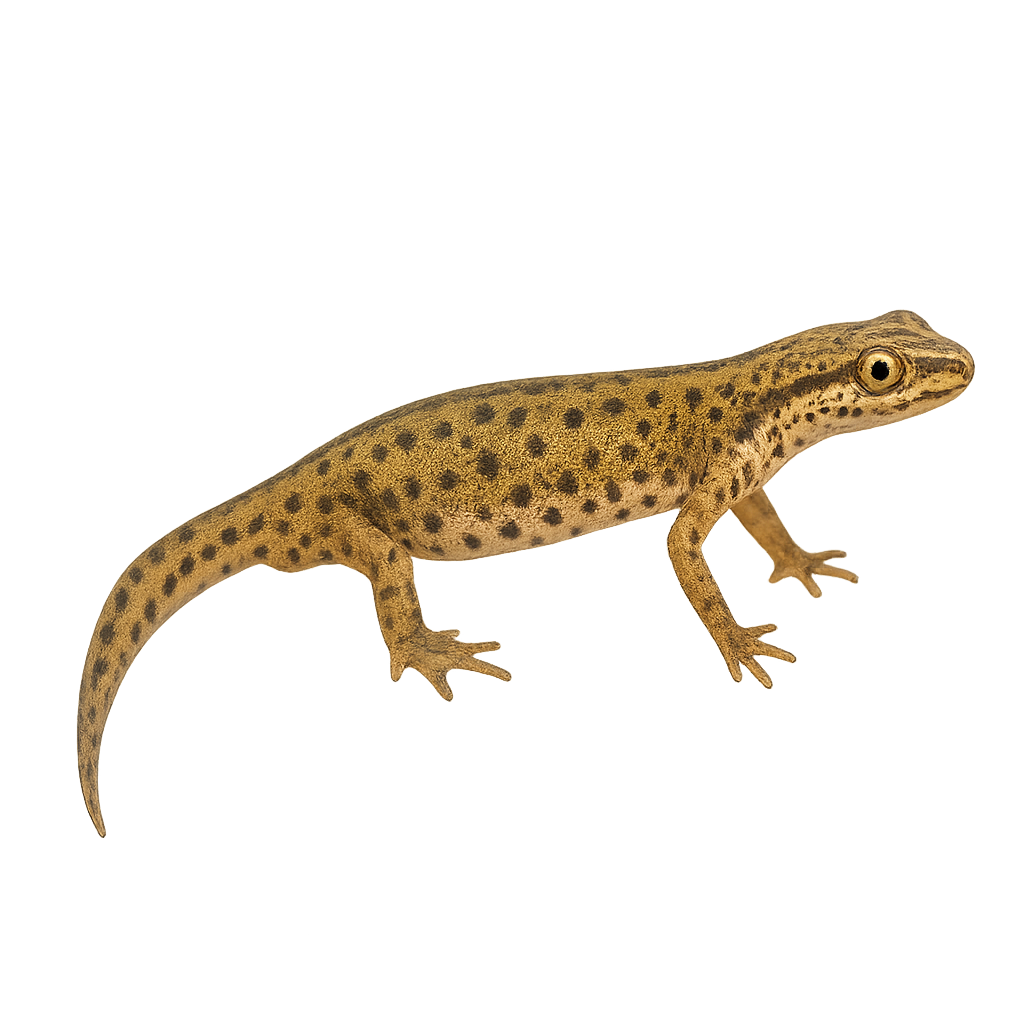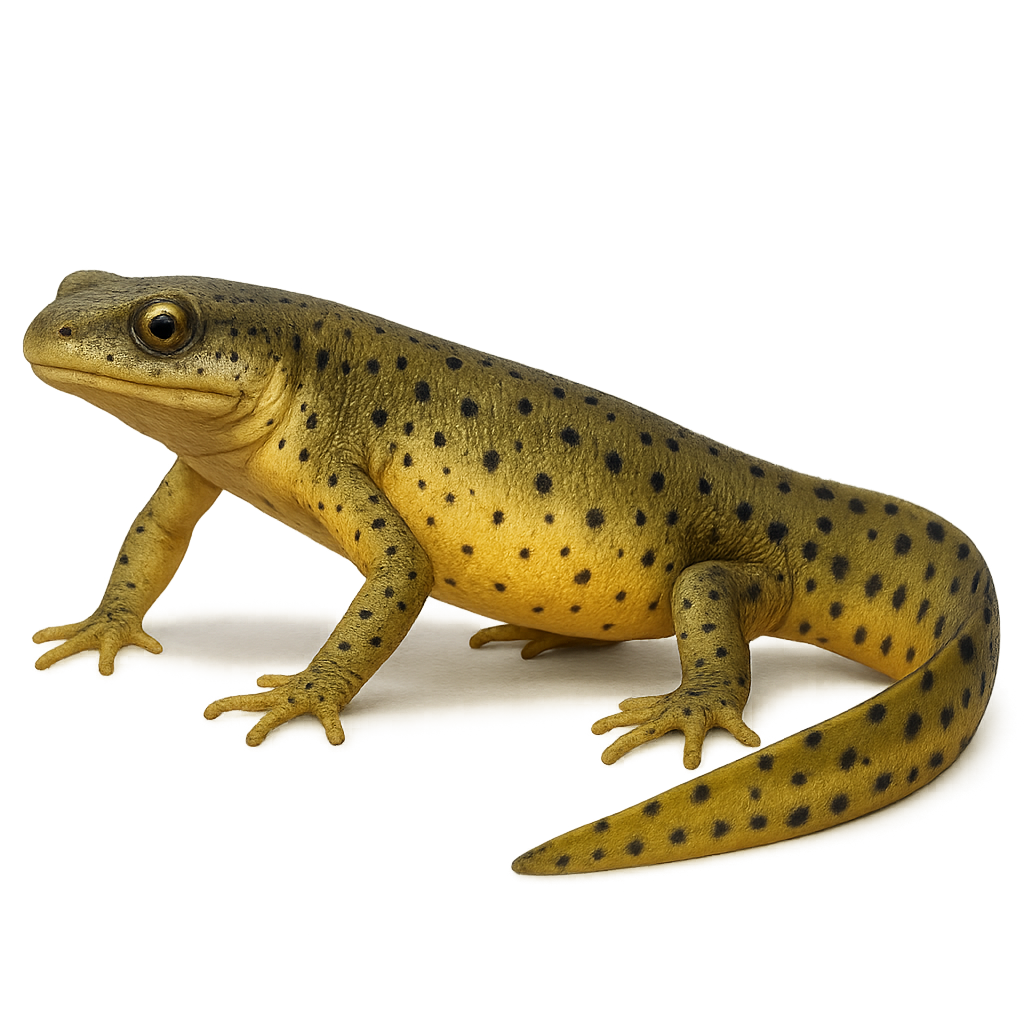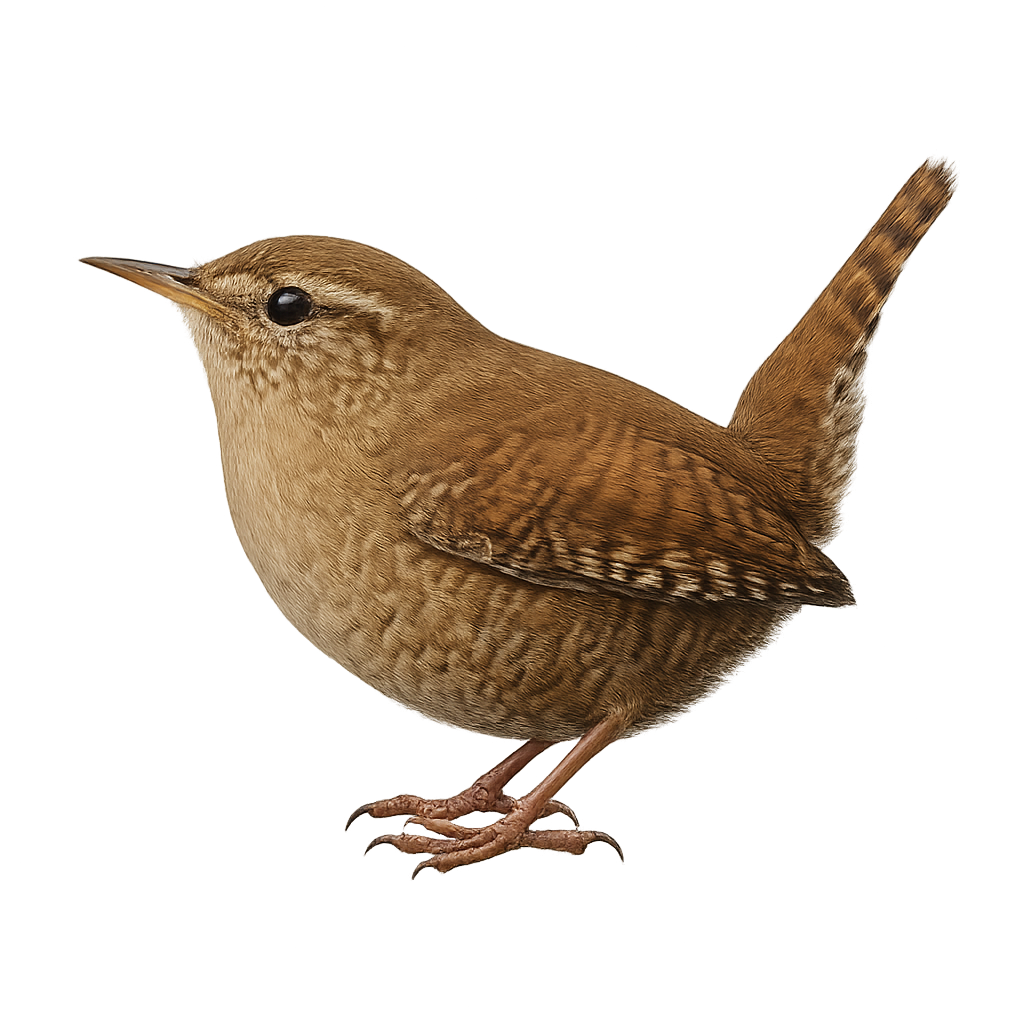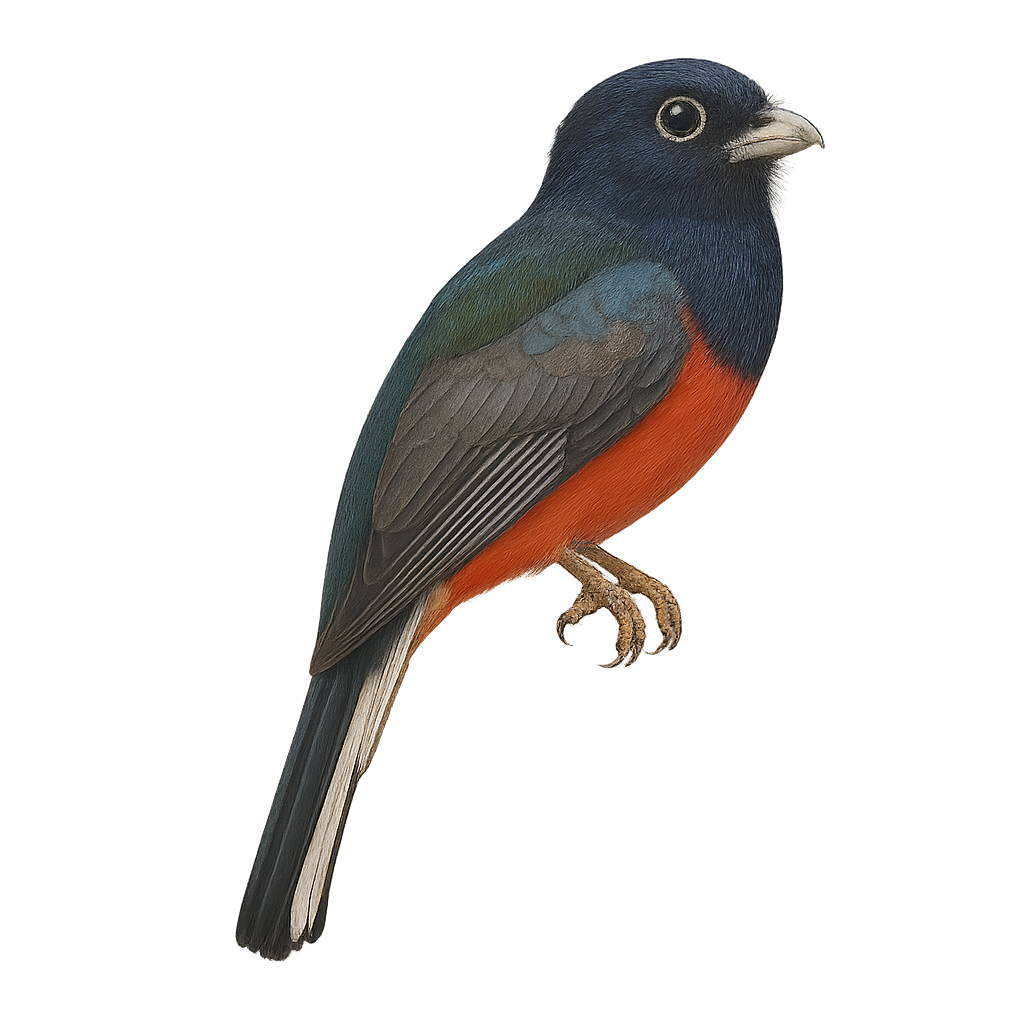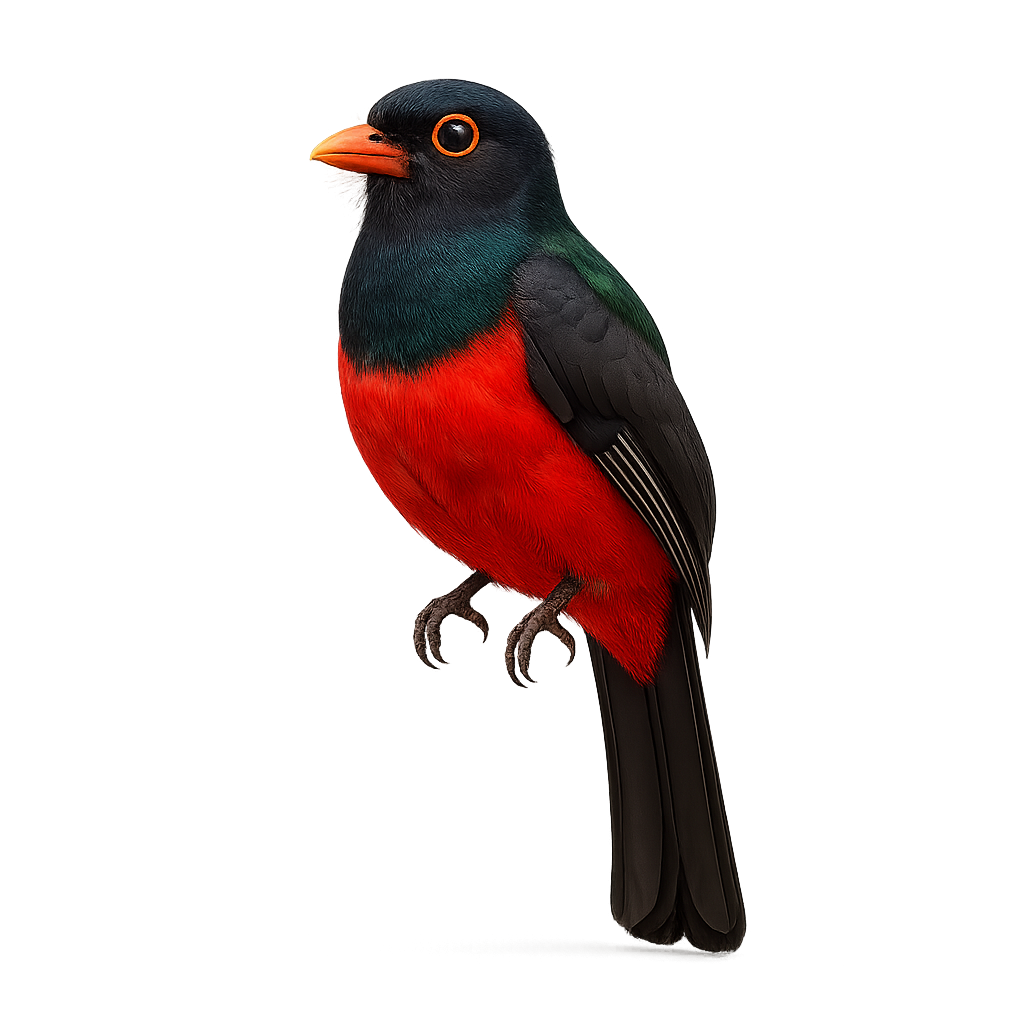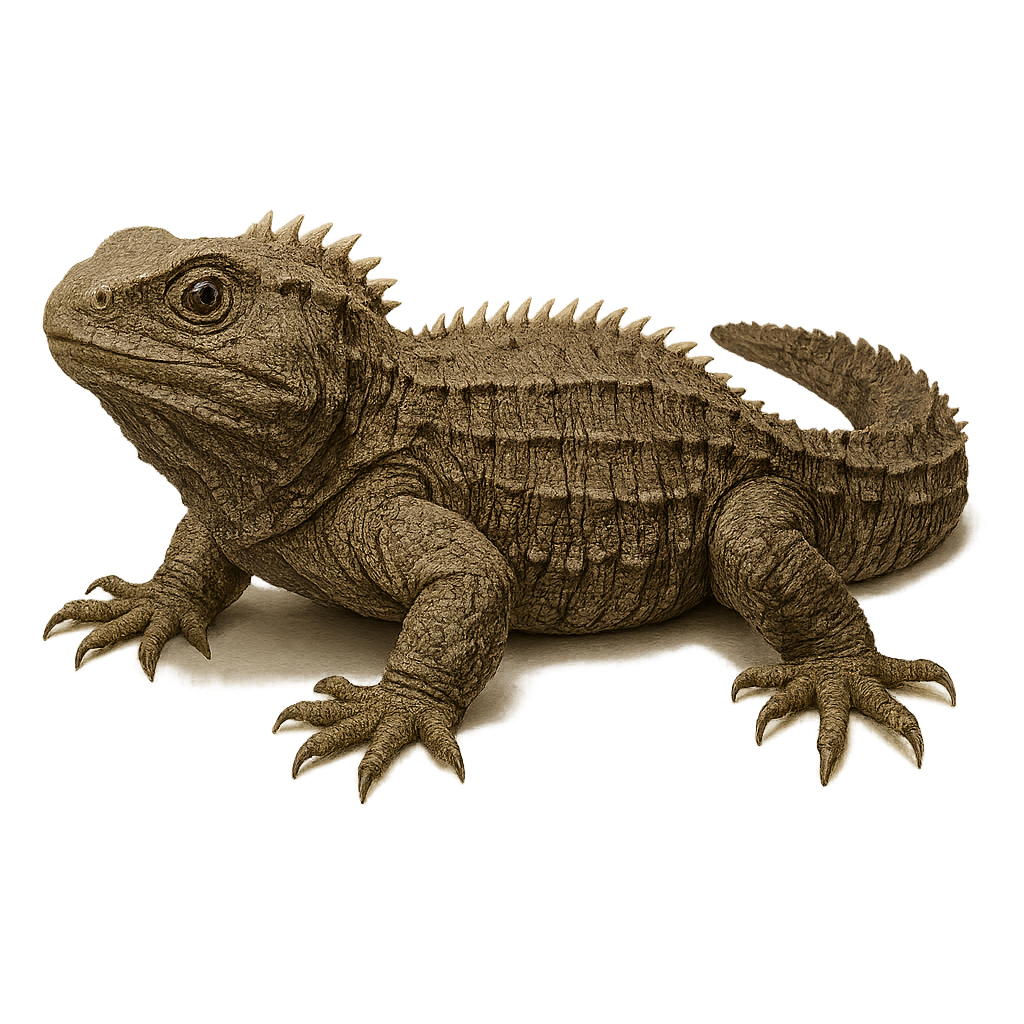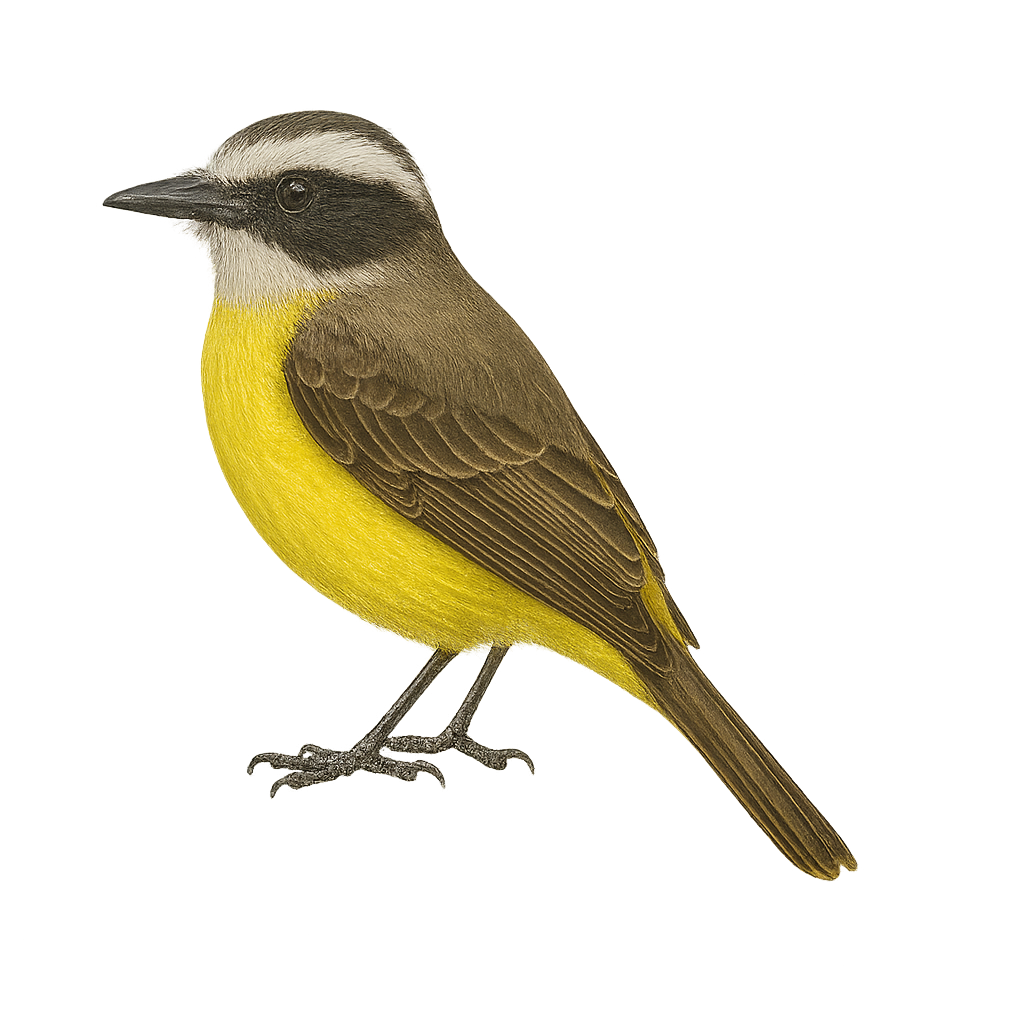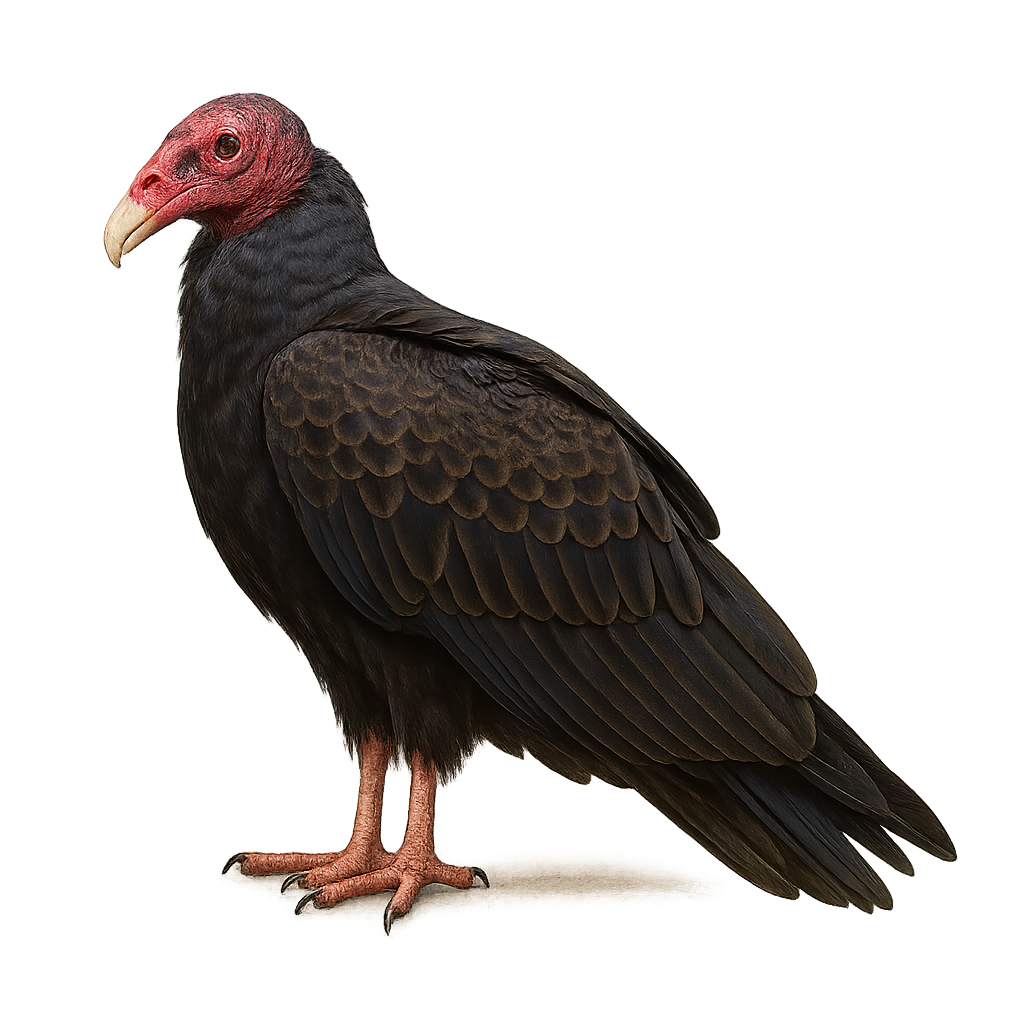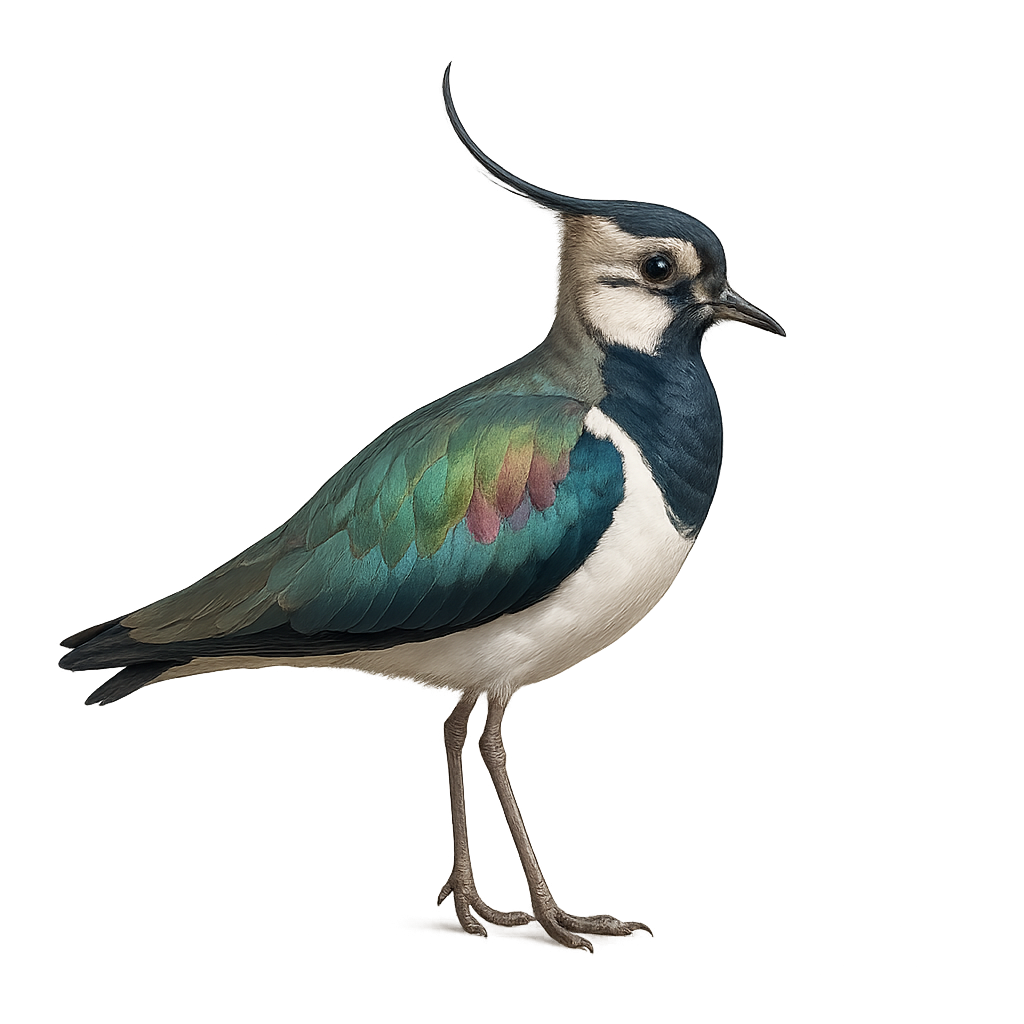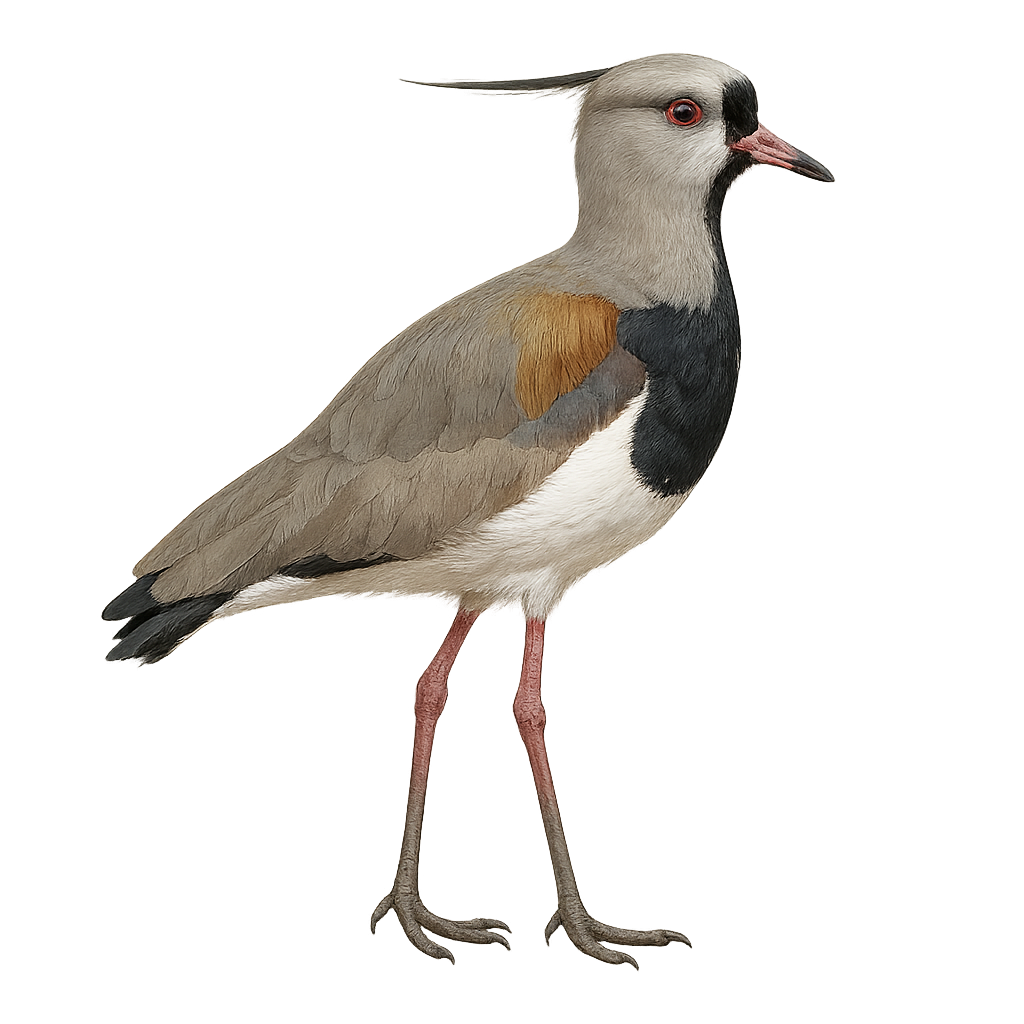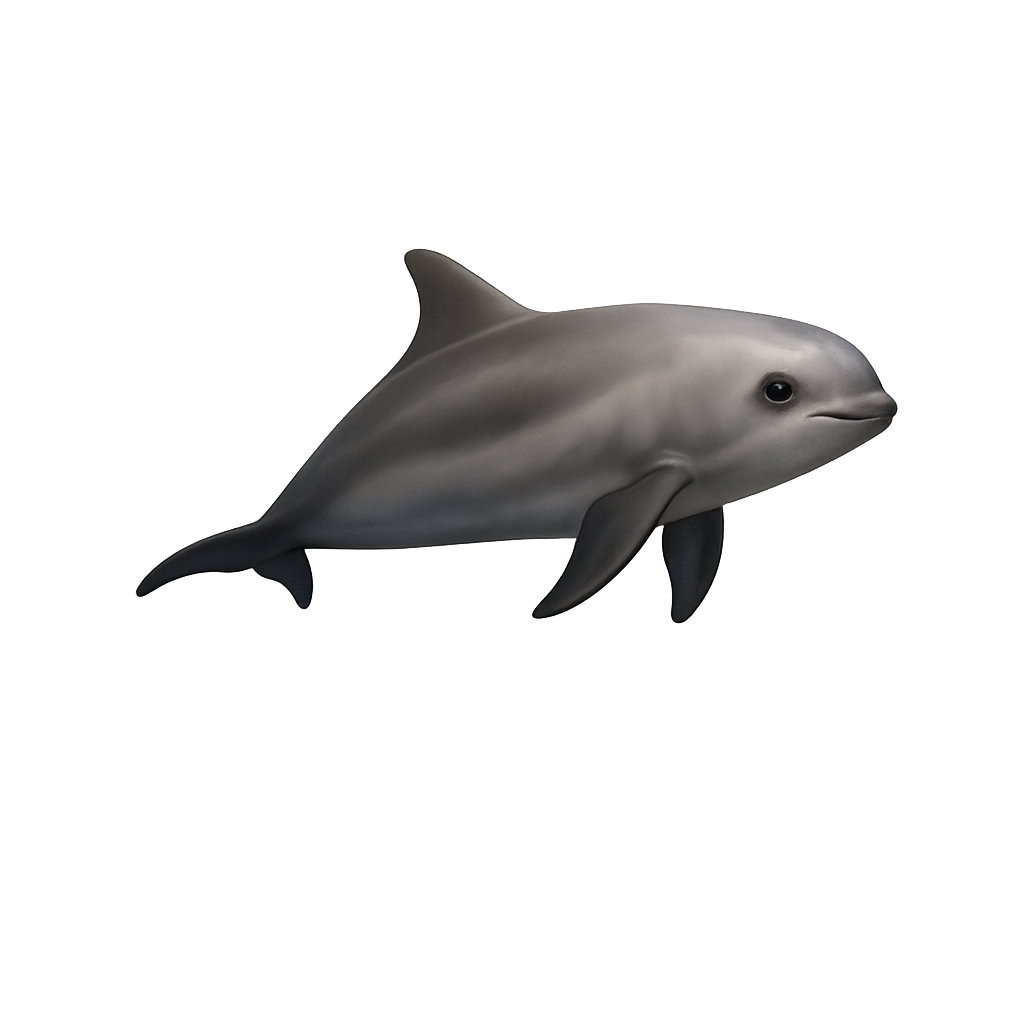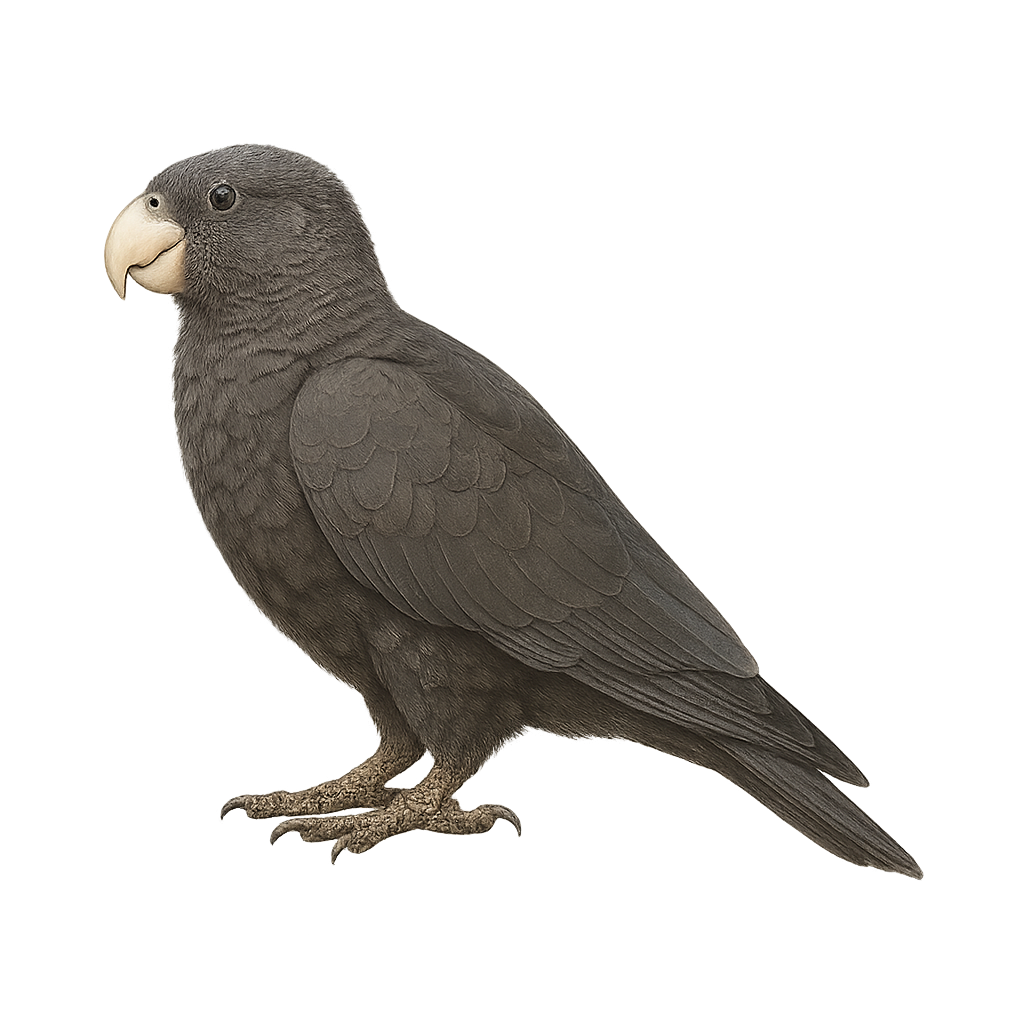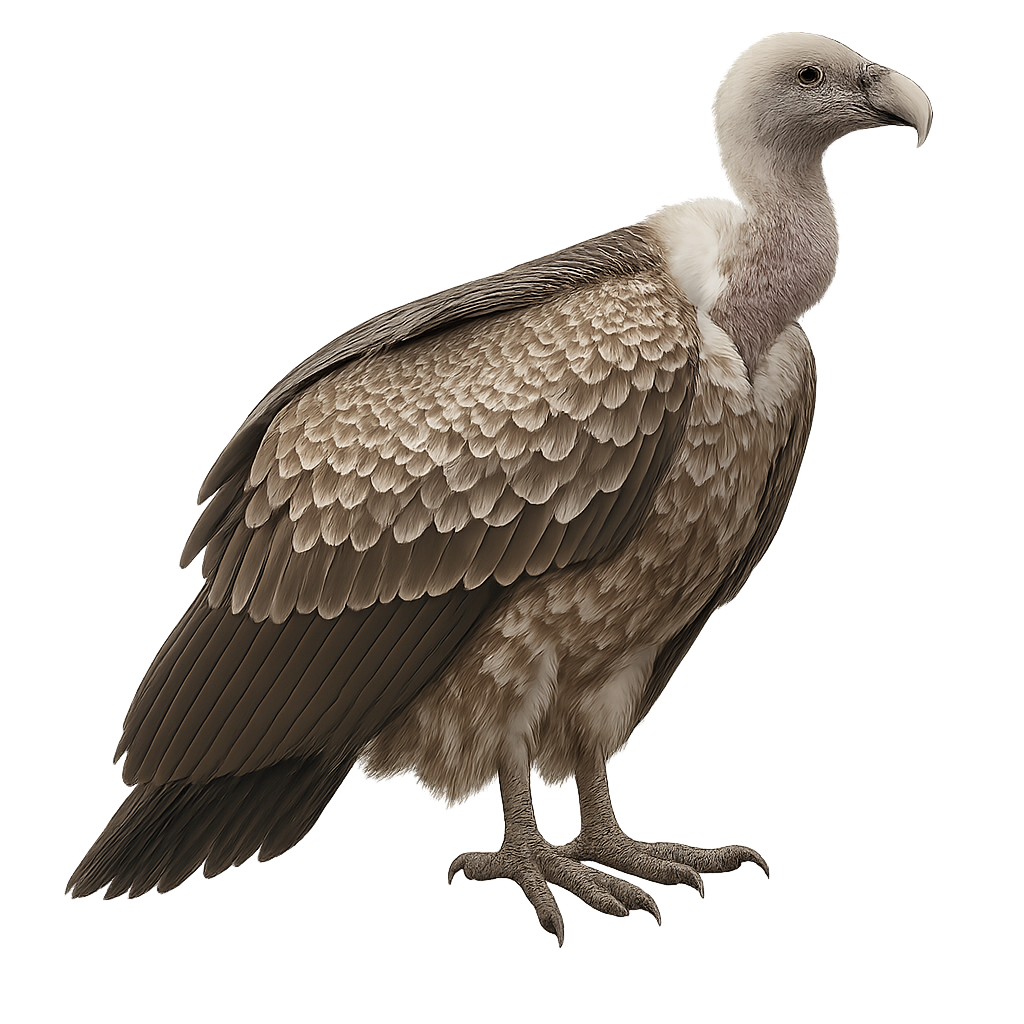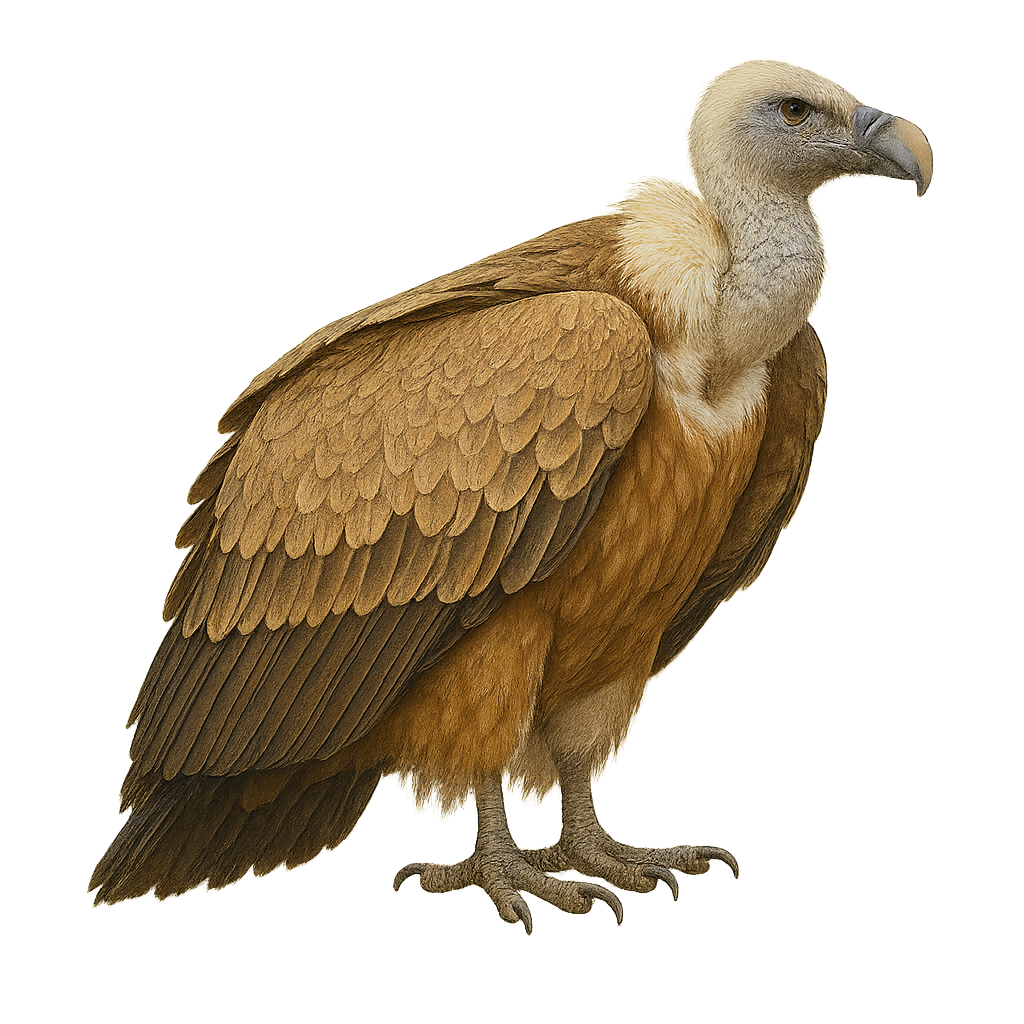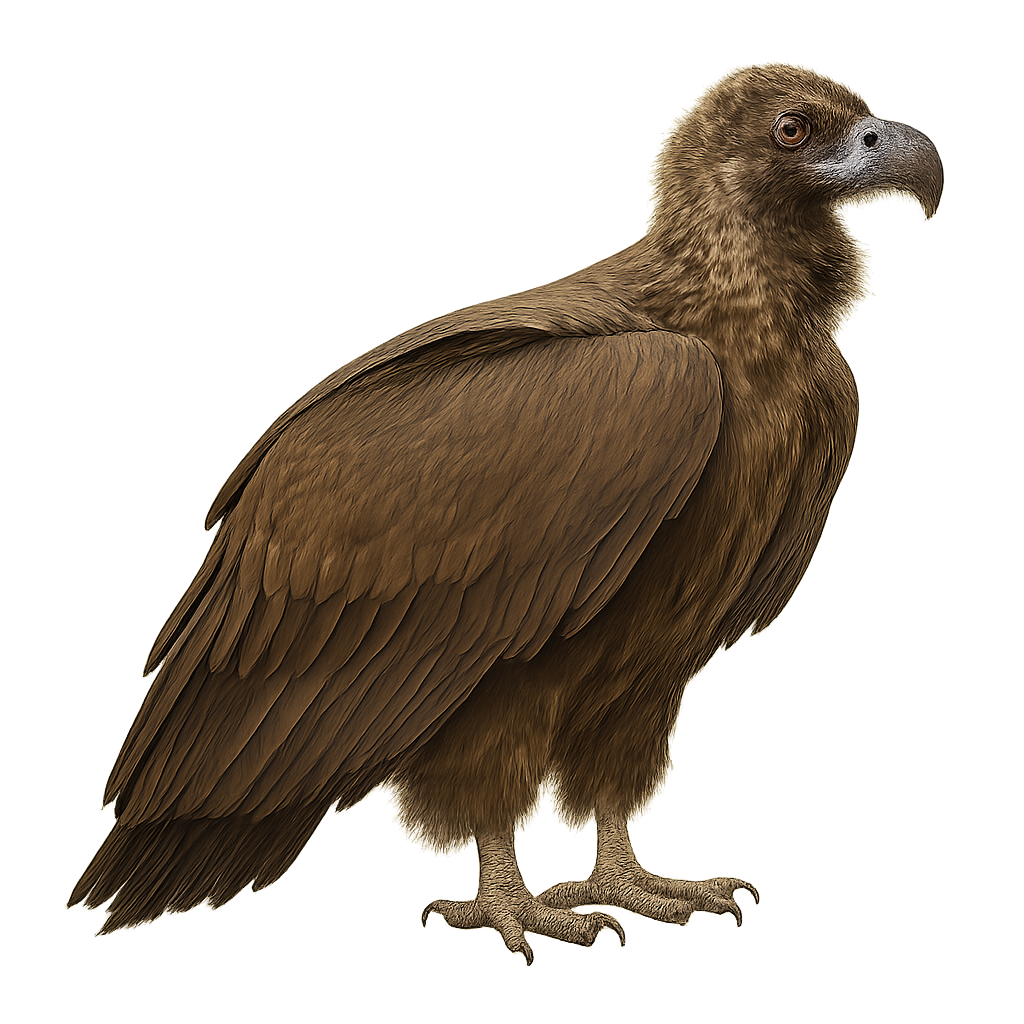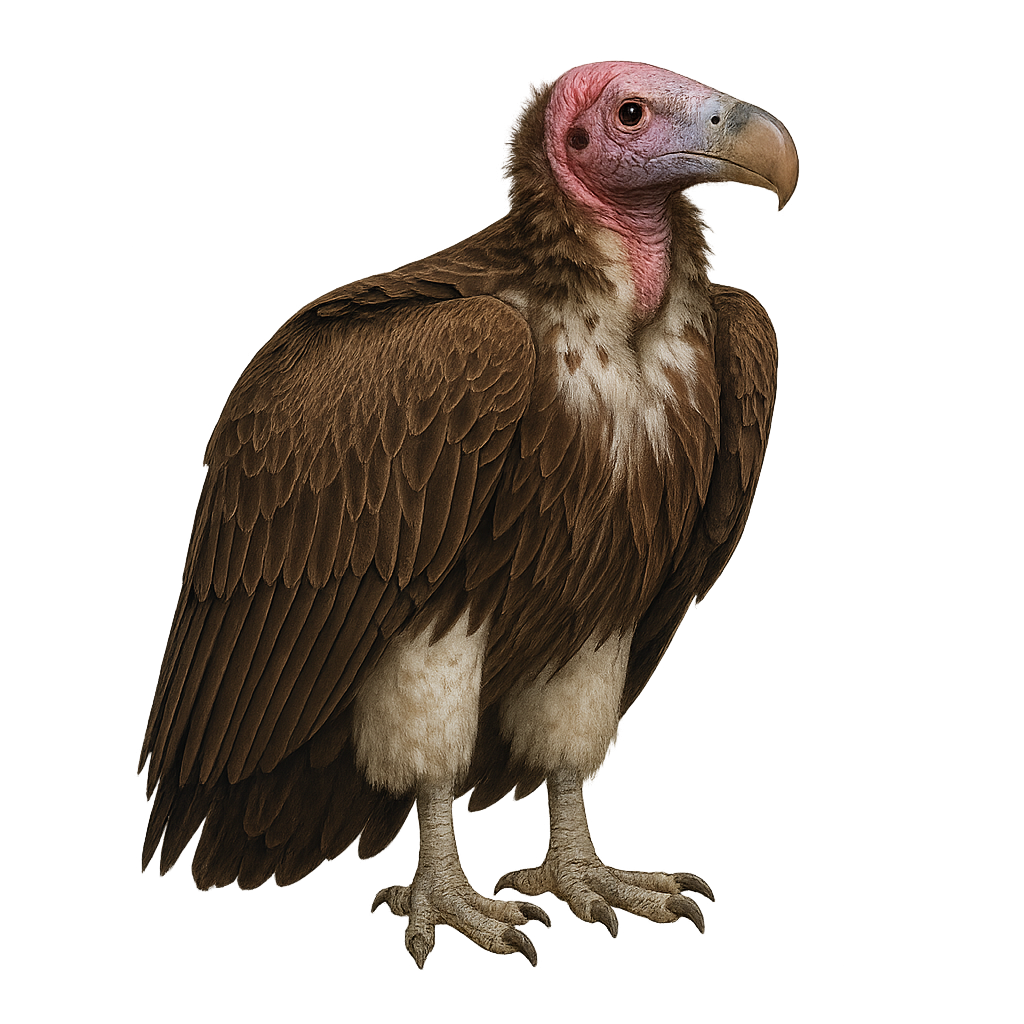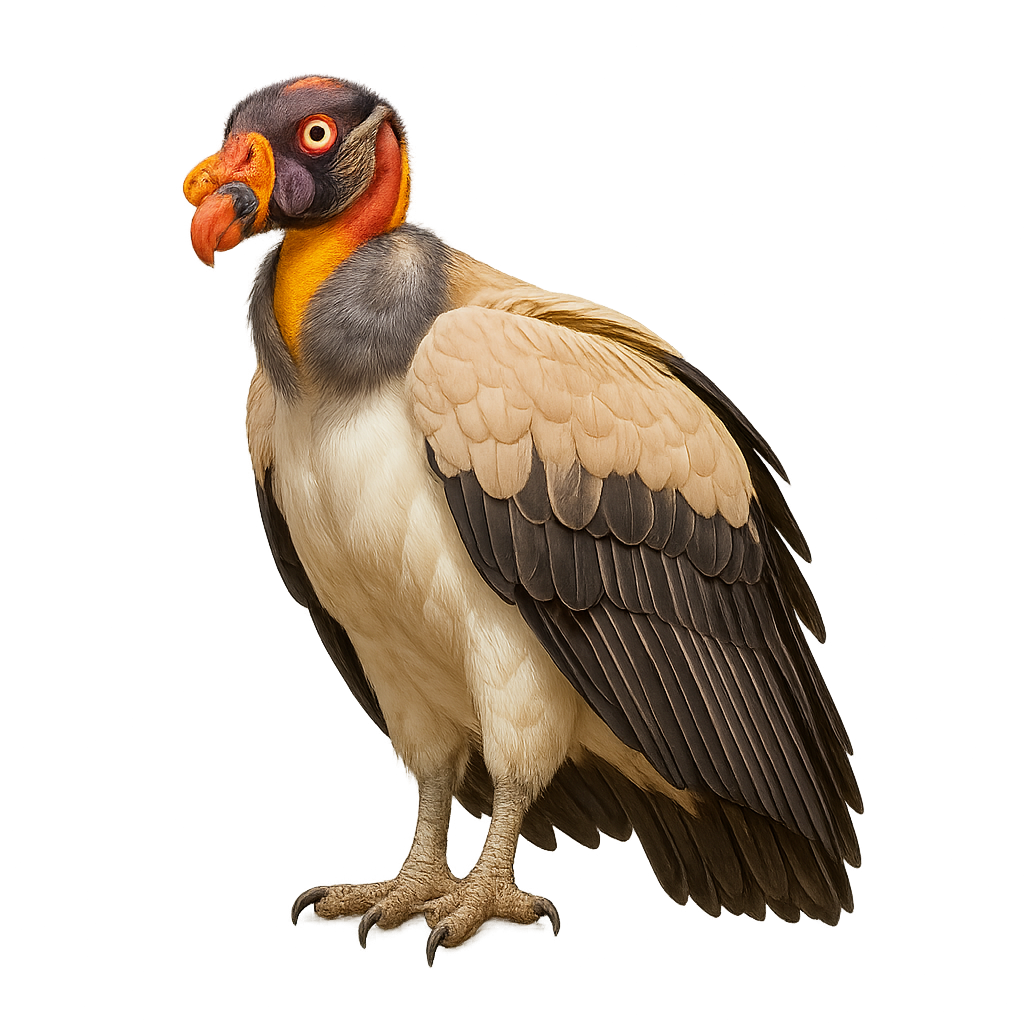The Eurasian Collared Dove is a medium-sized dove, measuring about 32 cm in length with a wingspan of 47 to 55 cm. Its plumage is grayish-beige with pinkish hues on the head and chest. It is characterized by a black half-collar edged with white on the back of its neck. It emits a soft cooing sound, often described as "hoo-hoo-hoo-hoo." Originally from South Asia, it has rapidly expanded into Europe, North Africa, and the Americas. It frequents urban, suburban, and agricultural areas, feeding primarily on seeds, berries, and buds. Breeding can occur year-round, with an average of three to four broods per year. The young leave the nest about 19 days after hatching. The species is listed as Least Concern by the IUCN.
The Satyr Tragopan is a fascinating bird native to the mountainous forests of the Himalayas. This medium-sized pheasant is particularly remarkable for its striking plumage. The male displays vibrant colors, with shades of red, orange, and blue, while the female is more subdued with brown and gray tones, allowing her to blend effectively into her surroundings. The Satyr Tragopan is known for its spectacular courtship displays, where the male spreads his feathers and emits loud calls to attract a mate. It primarily feeds on vegetation, seeds, and insects. Although its habitat is threatened by deforestation, it remains relatively common in some areas.
The Cyprus Wheatear, or Oenanthe cypriaca, is a small passerine bird belonging to the Muscicapidae family. This bird is endemic to the island of Cyprus, where it is often seen in open and rocky areas. It is distinguished by its black and white plumage, with a black head and a grayish back. The male and female show little sexual dimorphism, although the male displays slightly brighter colors. The Cyprus Wheatear is a trans-Saharan migrant, spending the winter in East Africa. It feeds mainly on insects caught on the ground. Its breeding season extends from spring to summer, where it builds its nest in rocky crevices.
The wheatear is a small ground-dwelling bird found primarily in meadows, cultivated lands, and rocky areas across Europe, Asia, and North Africa. It is easily recognized by its contrasting plumage, with a brown back, white belly, and a black head. This small bird is especially active and restless, often seen hopping on the ground in search of insects and small arthropods. It frequently perches on rocks or grasses to survey its surroundings.
The black-eared wheatear is a small passerine, 14–15 cm long, with contrasting plumage: pale grey crown and back, black wings and tail, white throat and a black eye stripe. It inhabits steppes, rocky slopes, scrub and open plains in southern Europe and Western Asia, feeding on insects and spiders on the ground or during low flights. During breeding (April to July), the male performs aerial displays and sings from a perch to attract the female and defend its territory.
The Black Wheatear, Oenanthe leucura, is a bird from the Muscicapidae family. It is predominantly black with a distinctive white tail. Found in arid and rocky regions of southern Europe and northern Africa, this bird is known for its territorial behavior and adaptability to harsh environments. The Black Wheatear primarily feeds on insects and small invertebrates. It nests in crevices or holes in rocks, typically laying 4 to 5 eggs. Although its habitat is sometimes threatened by human activity, it is currently classified as of least concern by the IUCN.
The Alpine newt is a small urodele amphibian, 9–13 cm long, with a bright olive back and orange belly. It inhabits ponds, pools, and wooded wetlands across temperate Europe. During the breeding season, males develop a colored tail crest and perform a nuptial dance to attract females.
The crested newt is a urodele amphibian, 9–11 cm long, with a dark brown back spotted with bright orange and a black belly. It inhabits temporary ponds, ditches, and woodland pools in temperate Europe, feeding on aquatic insects and small crustaceans with its rapid tongue. During the breeding migration, males develop a prominent dorsal crest and perform a nuptial dance in front of females.
The Italian Crested Newt, Triturus carnifex, is a species of newt in the family Salamandridae. It is characterized by its rough skin and prominent dorsal crest, especially visible in males during the breeding season. This newt typically measures between 10 and 16 cm in length. Its coloration ranges from brown to black, with lighter spots on the belly. It primarily inhabits wetlands, such as ponds and marshes, and is often found in nearby forests and grasslands. Although its population is stable, it faces threats from habitat destruction and water pollution.
The Japanese fire‐bellied newt is a medium‐sized aquatic salamander (10–12 cm body length), with a dark dorsum and bright red belly marked with black spots. Endemic to Japan, it inhabits ponds, forest pools and slow‐flowing streams, feeding on invertebrates, worms and small crustaceans. Gregarious and secretive, it performs tail‐fanning courtship displays and aggregates in sheltered bays during breeding.
The marbled newt, Triturus marmoratus, is a medium-sized amphibian, typically measuring between 12 and 15 cm in length. Its skin features a distinctive marbled green and black pattern, providing excellent camouflage in its natural habitat. Males display a striking dorsal crest during the breeding season. This newt is primarily found in humid forests, meadows, and wooded areas of Western Europe, particularly in France and Spain. It is nocturnal, hiding under stones or leaves during the day. Reproduction occurs in ponds or temporary pools. Although its conservation status is concerning, it remains relatively common in some areas.
The palmate newt is a small urodele amphibian, 6–9 cm long, with an olive-brown back dotted with dark spots and a yellow-orange belly. It inhabits temporary ponds, ditches, and woodland wetlands in temperate Europe. Solitary and unobtrusive, it feeds on aquatic insects and small crustaceans with its speedy tongue.
The Notophthalmus viridescens, commonly known as the Eastern newt, is a small amphibian native to North America. It is characterized by its smooth, moist skin, typically green with distinctive red spots along its back. The Eastern newt undergoes several life stages, including an aquatic larval stage, a terrestrial juvenile stage known as the "eft," and an aquatic adult stage. These newts prefer aquatic habitats such as ponds, marshes, and streams but can also be found in moist forests during their terrestrial phase. They primarily feed on aquatic invertebrates and play a crucial role in the ecosystem by controlling insect populations.
Wren
Troglodytes troglodytes
The wren is a small, highly active songbird found mainly in forests, gardens, and hedgerows across Europe and Asia. It is easily recognized by its small size, brownish-red plumage, and its often-raised tail in the shape of a 'V'. This passerine is highly territorial and primarily feeds on insects and small invertebrates. Although it is fairly discreet, its powerful song is one of the most remarkable among small birds.
The Black-headed Trogon is a colorful bird found primarily in the tropical and subtropical forests of Central and South America, notably in Mexico, Honduras, Costa Rica, and Panama. It typically measures about 25 to 30 cm in length and weighs between 90 and 120 g. Its plumage is especially vibrant, with a black head contrasting with a brightly colored body, primarily green and red. The Black-headed Trogon primarily feeds on fruits, berries, and small insects. It is often observed in dense forests, where it enjoys perching on tree branches. While its population remains relatively stable, it is sometimes threatened by deforestation and the loss of its natural habitat.
The Baird's Trogon is a fascinating bird, endemic to the humid tropical forests of Central America, particularly in Costa Rica and Panama. This trogon is distinguished by its striking plumage, with a metallic green back, bright red chest, and white belly. It is often observed silently perched in the canopy, feeding mainly on insects and fruits. Although discreet, its melodious song echoes through the forest, signaling its presence. Unfortunately, deforestation threatens its habitat, making it vulnerable. Conservation efforts are crucial to ensure its survival. This bird is a symbol of the biodiversity of tropical forests and an indicator of the health of these ecosystems.
The Massena's Trogon is a colorful bird found primarily in the humid tropical forests and wooded areas of Central America, particularly in Costa Rica, Panama, and Nicaragua. It typically measures about 26 to 30 cm in length and weighs between 90 and 120 g. Its plumage is vibrantly colored, with a green and red body, a yellow chest, and a black head, giving it a distinct appearance. The Massena's Trogon primarily feeds on fruits, berries, and small insects that it finds in the trees. It is often observed perched on branches, where it moves calmly and discreetly. While its population remains stable in some areas, it is sometimes threatened by deforestation and the loss of its natural habitat.
The Sphenodon punctatus, commonly known as the tuatara, is a reptile endemic to New Zealand. Often considered a living fossil, it belongs to an order of reptiles that thrived around 200 million years ago. The tuatara is nocturnal, primarily active at night, and feeds on insects, spiders, small birds, and eggs. It is recognizable by its spiny crest along the back, more pronounced in males. Tuataras have an exceptional lifespan, with some living over 100 years. They are oviparous, and females lay eggs that take between 12 and 15 months to hatch. Although protected, tuataras are threatened by habitat loss and introduced predators.
The Myiozetetes similis, commonly known as the Social Flycatcher, is a medium-sized bird with bright yellow underparts and a grayish-brown back. Its head features a distinctive black crown with a white stripe above the eyes. This bird is often found in open areas, near water bodies, or forest edges. Known for its energetic song, it adapts well to various environments, including urban areas. The Social Flycatcher primarily feeds on insects caught in flight but also consumes fruits. It is often seen in pairs or small groups, displaying marked territorial behavior.
The Turkey Vulture, or Cathartes aura, is a large scavenging bird of prey native to the Americas, easily identified by its red, featherless head and dark brown plumage. It plays a vital role in the ecosystem by consuming carrion, thus helping to prevent the spread of disease. With an excellent sense of smell, it can detect gases emitted by decaying carcasses. In flight, it is often seen soaring with its wings in a V-shape, using thermal updrafts to conserve energy. Although typically solitary, it can gather in large groups to feed. Its ability to adapt to various habitats, from forests to deserts, makes it a resilient and widespread bird.
The Northern Lapwing is a medium-sized bird found primarily in grasslands, fields, and wetlands across Europe, Western Asia, and the Middle East. It typically measures about 28 to 32 cm in length and weighs between 150 and 200 g. Its plumage is primarily black and white, with a distinctive crest on its head and a white belly. The Northern Lapwing is a ground-dwelling bird that primarily feeds on insects, worms, and other small invertebrates found in the soil. It is also known for its ground nesting behaviors, often in colonies. While its population remains stable in some areas, the Northern Lapwing is threatened by habitat loss due to intensive agriculture and land degradation.
The Southern Lapwing, or Vanellus chilensis, is a striking bird from the Charadriidae family, easily identified by its grey and white plumage, black wings, and distinctive call. It is commonly found in open grasslands, wetlands, and agricultural fields across South America. This bird is notably territorial, often defending its space against intruders, including humans. It primarily feeds on insects, worms, and small invertebrates by pecking at the ground. The Southern Lapwing is also known for its distraction displays, feigning injury to lure predators away from its nest.
The vaquita is a small porpoise (1.3–1.5 m, 40–60 kg) endemic to the Upper Gulf of California, with pale grey-blue skin and rounded head. Critically endangered, it uses echolocation to hunt fish and shrimp in turbid, shallow waters (<30 m). Fewer than 10 remain due to bycatch in gillnets and illegal fishing.
The Nile Monitor is a large reptile species native to Africa, particularly found in sub-Saharan regions. It is easily recognized by its impressive size, long and powerful body, and smooth scales. This monitor is semi-aquatic and is commonly found near rivers, lakes, and swamps, where it feeds on fish, amphibians, birds, and even small mammals. Highly agile, it is also capable of swimming and climbing with ease. The Nile Monitor is known for its territorial nature and sometimes aggressive behaviors, especially during the breeding season.
The Coracopsis vasa, commonly known as the Vasa Parrot, is a parrot endemic to Madagascar. It is notable for its blackish plumage, which turns brownish during the breeding season. This medium-sized parrot, measuring about 50 cm, has a strong beak and a relatively long tail. Its call is harsh and distinctive, often heard in the dry and humid forests of the island. The Vasa is a social bird, frequently observed in noisy groups. It primarily feeds on seeds, fruits, and flowers. Its ability to adapt to various habitats, from forests to savannas, makes it a resilient species. However, deforestation and capture for the pet trade threaten its population.
The Rüppell's vulture is a large carrion-feeding raptor, 85–95 cm tall with a wingspan of 230–265 cm, featuring dark brown plumage and a pale bare head. It inhabits mountain cliffs and savannas of East and Central Africa, feeding mainly on large mammal carcasses. During breeding, it nests in dense colonies on cliff ledges, and pairs sometimes perform group display flights above their nests.
The Griffon Vulture is a large bird of prey found primarily in the mountains, hills, and rocky areas of Europe, Asia, and North Africa. It typically measures between 93 and 110 cm in length, with a wingspan of 2.5 to 2.8 meters, and weighs between 6 and 12 kg. Its plumage is mainly light brown, with white feathers around its neck and head, and a large area of bare skin on the neck. The Griffon Vulture is a scavenger, primarily feeding on animal carcasses. It plays a crucial role in the ecosystem by cleaning up carcasses and preventing the spread of diseases. While its population has declined in some regions, the Griffon Vulture benefits from conservation programs, but it remains threatened by habitat loss, illegal hunting, and poisoning.
The Monk Vulture is a large bird of prey found primarily in the mountains of Eastern Europe, Asia Minor, and Central Asia, with populations in Spain, Bulgaria, and Greece. It typically measures between 80 and 100 cm in length, with a wingspan of 2.3 to 2.8 meters, and weighs between 7 and 12 kg. Its plumage is mainly dark brown, with a bare head, distinguishing it from other vultures. The Monk Vulture is a scavenger, primarily feeding on animal carcasses, and plays a crucial ecological role in helping to remove carcasses and prevent the spread of diseases. While it is protected in many regions, it remains threatened by habitat loss, poaching, and poisoning.
The Lappet-faced Vulture, Torgos tracheliotos, is a large scavenging bird native to Africa, easily identifiable by its bare head and distinctive skin folds around the neck. With a wingspan reaching up to 2.9 meters, it is one of the largest African vultures. Its plumage is primarily dark brown, contrasting with its pale pink head. It plays a crucial role in the ecosystem by cleaning up carcasses, which helps prevent the spread of diseases. This vulture prefers open savannas, semi-deserts, and arid regions, where it can easily spot its prey. Unfortunately, it is threatened by habitat loss, poisoning, and illegal hunting.
The King vulture is a large raptor from the Cathartidae family, recognizable by its bare red head and dark plumage. This vulture, which inhabits mainly the forests and savannas of Central and South America, primarily feeds on carrion, which it finds thanks to its excellent sense of sight and smell. It plays an essential ecological role in cleaning ecosystems. Despite its imposing size, it is often seen flying alone or in small groups. While protected, it is threatened by habitat loss and poisons used in certain hunting practices.


